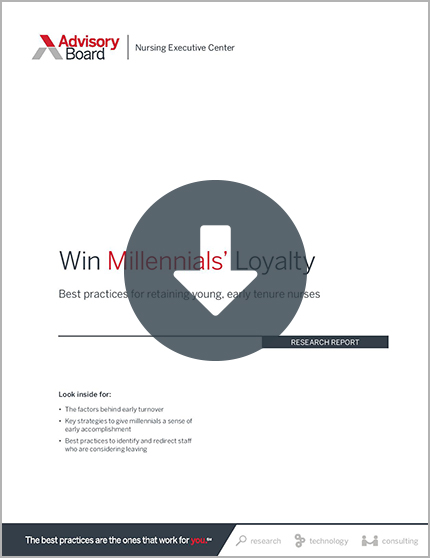Auto logout in seconds.
Continue LogoutRead Advisory Board's take: How to attract nurses when salaries are stagnant
RNs saw slight increases in compensation between 2016 and 2017, while licensed practical nurses' (LPNs) compensation remained stagnant—which suggests nurse income might be falling when inflation is factored in, according to Medscape's latest RN/LPN Compensation Report.
For the report, Medscape surveyed 10,282 nurses—including 5,011 RNs and 2,002 LPNs—between July 12 and Aug. 31. Respondents were asked about compensation from 2017, as well as practice setting, level of education, and union membership.
How much nurses make
According to Medscape, full-time RNs in 2017 reported annual average gross income of $81,000, up slightly from $80,000 in 2016. LPNs, on the other hand, reported annual average gross income of $46,000 in 2017, the same as 2016. Medscape noted that, had the report adjusted for inflation between 2016 and 2017, wages for both RNs and LPNs would have likely fallen.
The wage stagnation could be due in part to an increase in retirements from older and more highly-paid nurses who are being replaced by younger nurses in the early stages of their careers, Medscape writes.
Annual income varied substantially by practice setting, Medscape found. Among RNs, the practice settings with the highest average annual income in 2017 were occupational health, inpatient hospital care, and industry settings. All three had annual incomes of $84,000.
The practice settings for RNs in 2017 with the lowest average annual incomes were:
- Non-hospital-based medical offices/urgent care clinics ($71,000);
- Public health setting ($69,000); and
- School/college health services ($66,000).
Meanwhile, among LPNs, the practice settings with the highest average annual income in 2017 were:
- Skilled nursing facility/other long-term care ($48,000);
- Inpatient hospital care ($47,000); and
- Home health/visiting nurse ($46,000).
And the practice settings for LPNs in 2017 with the lowest average annual earnings were:
- Non-hospital-based medical offices/urgent care clinics ($44,000);
- Public health setting ($44,000); and
- School/college health services ($37,000).
Where nurses make the most
The survey also found regional differences in RN and LPN income. Among RNs in 2017, those in the Pacific region reported the highest average annual income at $102,000, while those in the East South Central region reported the lowest average annual income at $69,000.
Among LPNs, the highest average annual incomes were reported in the New England region at $56,000, while the lowest were reported in the East South Central region at $42,000.
Other factors influencing nurse income
According to Medscape, income levels also varied by level of education. For instance, in 2017, RNs whose highest degree was a master's reported an average annual income of $88,000, compared with an average annual income of $81,000 for those with a bachelor's degree and $74,000 for those with an associate's degree.
In addition, the survey found that union membership correlated with higher incomes. RNs in unions—accounting for about 16% of RNs—had an average annual income of $89,000, while non-union nurses had an average annual income of $79,000. Meanwhile, LPNs in unions—accounting for about 10% of LPNs—had an average annual income of $51,000 while non-union nurses had an average annual income of $46,000.
Men still make more than women
The Medscape survey found pay disparity between male and female nurses continued in 2017 for the fourth year in a row, despite only accounting for 8-10% of the nursing workforce. According to the survey, male RNs and LPNs reported higher annual gross income in 2017—at $84,000 and $50,000 respectively—than female RNs and LPNs—at $80,000 and $46,000 respectively.
According to Medscape, the reason why men are being paid more than women is unclear, as they "still lack firm data to inform us of why this occurs" (Brown, Medscape, 10/11; Knowles, Becker's Hospital Review, 10/10; Medscape RN/LPN Compensation Report, 2018, 10/10).
Advisory Board's take
 Carol Boston-Fleischhauer, JD, MS, BSN, Chief Nursing Officer and Managing Director
Carol Boston-Fleischhauer, JD, MS, BSN, Chief Nursing Officer and Managing Director
Medscape's 2018 annual nurse salary report includes some notable findings. What stands out to me is that nurses' wages have remained steady in a strong labor market where wages have been rising consistently among other healthcare workers.
I also noticed the following key points:
- Annual gross income for full-time RNs has remained essentially unchanged; from $80,000 in 2016, to $81,000 in 2017;
- 57% of surveyed RNs report being paid by the hour, while 43% report being on salary; and
- A 7% gender gap between men and women exists, although the study does not take into account differences in positions held, just overall income and place of employment.
The study suggests that adjusting for inflation, overall RN wages slightly decreased, although they still remained higher than in previous years. With employment projections for RNs projected to grow by 15% between 2016 and 2026, what does this mean for executives challenged to maintain a highly engaged workforce?
First, innovations in recruitment strategies will be called for. So long as an organization's overall salary structure is market competitive, wages will not be the primary differentiator in attracting talent. While some hospitals have gone to great lengths to attract nurses (even offering Hawaiian vacations and summers off), our research has found that organizations don't need to jump to these approaches right away.
“The key is to be mindful of how tech savvy today's RN candidate pool is”
Instead, they should focus on revamping their application process to make it much more user-friendly and expedient. Interactive application websites can return huge dividends. For instance, consider a chat function on recruiting websites to allow applicants to message recruiters immediately about a position and ask any clarifying questions. Or consider an approach like Children's Mercy Hospital, which uses a video application to allow applicants to introduce themselves faster and find the right fit before they complete an application (learn more about their program here). The key is to be mindful of how tech savvy today's RN candidate pool is, especially the new graduate RN who is nimble with technology sites and expects immediate feedback.
You can also follow other organizations who have built tighter pipelines to attract nurses to their programs. For instance, Central Methodist University has an accelerated bachelor of nursing program that incentivizes recent graduates to work at their hospital. Boone Hospital has staged career fairs to recruit more ICU nurses—which include tours of the hospitals and opportunities to speak with current nurses and hiring managers who can interview attendees on the spot.
“Retaining nurses once hired is essential, and that goes far beyond maintaining a competitive salary structure.”
Beyond recruitment innovations, retaining nurses once hired is essential, and that goes far beyond maintaining a competitive salary structure. Focusing on the key drivers of nurse engagement is essential; to learn more about how to engage nurses in their work, read our study on The National Prescription for Nurse Engagement.
But organizational loyalty is equally as important to engender—in particular, for our millennial workforce who often take several years to select their ultimate employer of choice. To examine the unique loyalty drivers of millennial RNs, review our report to how to Win Millennial's Loyalty.
At the end of the day, organizations must continue to be market competitive with wages, but should view salaries as a threshold for RN recruitment. A strategy to address workforce retention goes far beyond wages, and includes a comprehensive set of engagement and loyalty strategies.
Don't miss out on the latest Advisory Board insights
Create your free account to access 1 resource, including the latest research and webinars.
Want access without creating an account?
You have 1 free members-only resource remaining this month.
1 free members-only resources remaining
1 free members-only resources remaining
You've reached your limit of free insights
Become a member to access all of Advisory Board's resources, events, and experts
Never miss out on the latest innovative health care content tailored to you.
Benefits include:
You've reached your limit of free insights
Become a member to access all of Advisory Board's resources, events, and experts
Never miss out on the latest innovative health care content tailored to you.
Benefits include:
This content is available through your Curated Research partnership with Advisory Board. Click on ‘view this resource’ to read the full piece
Email ask@advisory.com to learn more
Click on ‘Become a Member’ to learn about the benefits of a Full-Access partnership with Advisory Board
Never miss out on the latest innovative health care content tailored to you.
Benefits Include:
This is for members only. Learn more.
Click on ‘Become a Member’ to learn about the benefits of a Full-Access partnership with Advisory Board
Never miss out on the latest innovative health care content tailored to you.

